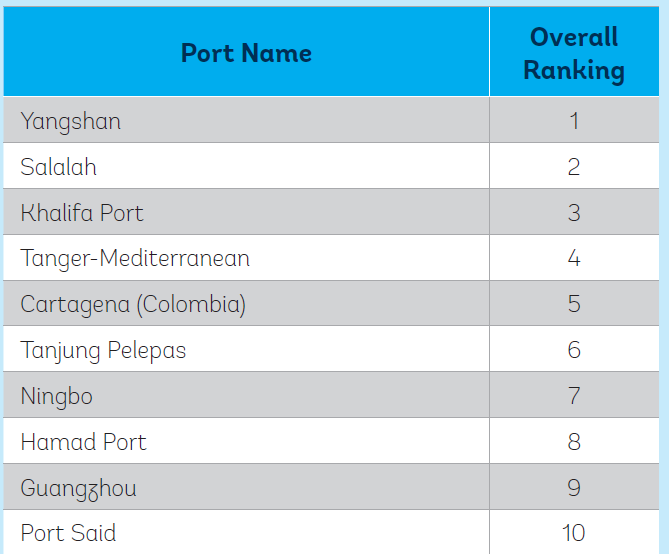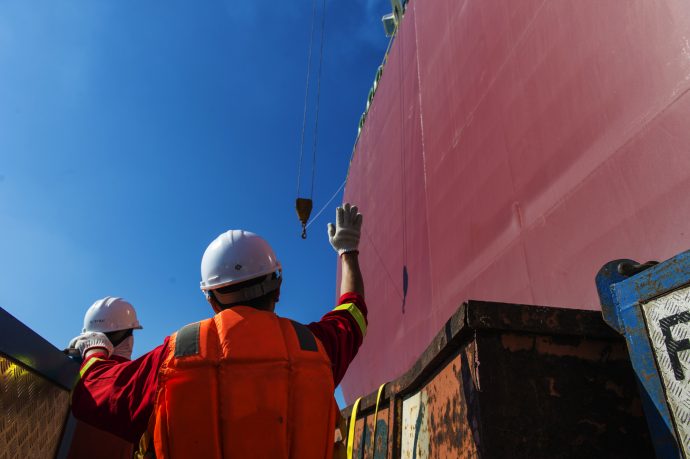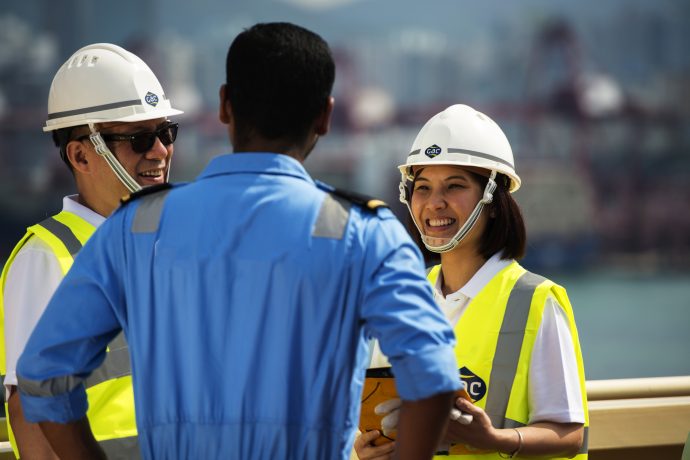Container ports in the Middle East and East Asia dominated the most recent Container Port Performance Index (CPPI) report, which highlighted the importance of both regions to the foundation of global trade and the manufacturing supply chain.
Produced in collaboration with the World Bank Group and S&P Global Market Intelligence, the third edition of the report published in May looks at the performance of 348 container ports around the world. It aims to identify gaps and opportunities for improvement for the benefit of key stakeholders in global trade, including governments, shipping lines, port and terminal operators, shippers, logistics companies and consumers.
Ports’ assessment is based on their efficiency in a number of key factors including terminal capacity, landside connectivity and ship-to-shore interchange. Most critical, however, is how long container ships are berthed and how quickly the port can turn them around to keep cargo moving. Time saved in turnaround means more hours at sea, which potentially also results in slower sailing speeds, lower carbon emissions and cost savings for ship operators.
Top 10
In the Middle East, the ports of Salalah in Oman, Khalifa in the United Arab Emirates, and Hamad
in Qatar all made the top 10 of this year’s index. They were joined by the East Asian ports of Yangshan, Ningbo and Guangzhou in China, and Tanjung Pelapas in Malaysia. Tanger-Mediterranean in Morocco, Cartagena in Colombia, and Port Said in Egypt completed the top rankers.

GAC is physically present at eight of the Top 10 ports, and works with carefully selected local agents at the remaining two. And as a leading ship agent, GAC has played a significant role in minimising turnaround times by ensuring key aspects of vessels’ port calls run as smoothly as possible.
“Our involvement in helping a vessel turnaround at port starts long before it docks,” says Fredrik Nystrom, Group Vice President for Middle East. “GAC’s experienced, dedicated ship agency teams work around-the-clock to ensure everything is in place - from teams on the ground to support arrival at anchorage and ensuring cargo and crew documents are in order, to a wide range of services including husbandry, spare parts and bunkering.
“Further, we have built close relationships with all the stakeholders involved in the turnaround process, including local governments to port authorities to all manner of suppliers. This collaboration, with GAC at the helm, is what keeps vessel turnaround times down.”

Resilience
Based on the Index, ports in the Middle East and East Asia responded best to the heavy volume growth and service volatility arising from the pandemic – a testament to the resilience and adaptability of the regions’ container ports amid unprecedented port congestion and supply chain disruptions.
“Despite the pandemic, 2022 was an exceptionally busy year for China’s maritime industry which handled a total container volume of 295.9 million TEU, a 4.7% year-on-year increase from 2021,” says Frank Xia, GAC China’s Shipping Director. “This was made possible by China’s heavy investment in automation and rail connectivity to keep port operations seamless and efficient.”
Similar efforts to boost efficiency in ports in the Middle East through investments in container port infrastructure and technology are also proving effective. In Oman, the Port of Salalah has invested around US$800 million in infrastructure, including bringing 16 new eco-efficient, rubber-tyred gantry cranes and three new mobile harbour cranes into operation last year.
“Part of Oman’s 2040 vision is to elevate infrastructure as a key economic instrument to further grow the transportation and logistics sector,” notes GAC Oman General Manager Johannes Ericson. “To achieve that goal, the Port of Salalah is actively adopting new equipment and technology to expand operations and enhance container and general cargo handling.”

Informed decisions
With China, South Korea and India driving manufacturing prowess and the Middle East becoming a strategic hub connecting Europe, Asia and Africa, ports in the regions are pushing for increased efficiencies.
“An important part of a ship agent’s role is to offer frontline experience to aid owners and operators that can’t be at every vessel call. Technological advances, such as automation and artificial intelligence, enable agents to collect and analyse more data than ever before, improving their position as the main information hub for local regulations and requirements, such as crew requirements, customs checks and documentation,” says Fredrik.
In recent years, GAC developed its Pegasus portal to provide large international customers with real-time information about port infrastructure, services, mishaps, accidents, delays and turnaround times. With access to data on 220,000 vessels and ports around the world, customers can predict port congestion, pick the best routes and make informed voyage decisions based on efficiency, time and financial considerations even before booking shipping services.
To ensure data quality, GAC has also turned towards digital documents, such as automated data scanning of passports for crew changes, to streamline processes, reduce manual entry errors, minimise delays and comply with regulations.
And at certain locations, such as India, GAC uses market research tools, including commodity-based line-ups, delay analyses, tonnage updates and industry trends, to help customers stay abreast and plan for operations intelligently.

As Fredrik notes: “Ship agents’ local presence on the ground will still be vital even in a digital world. And as a leading global ship agent, GAC embraces innovations that can improve vessel turnaround times and offer better operational information to help customers plan better.”